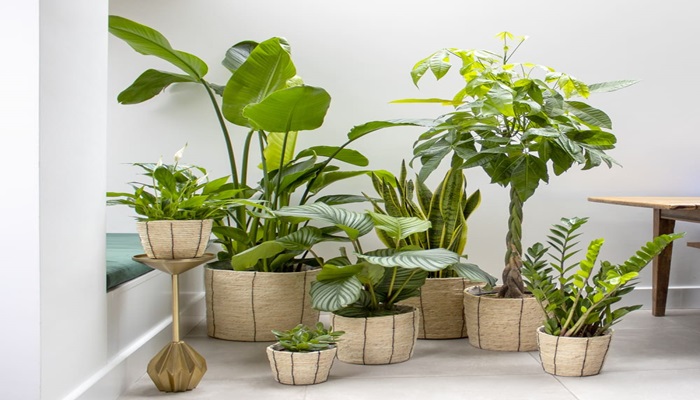There are two types of people: those who can effortlessly cultivate lush, green houseplants that make others envious, and those who struggle to keep a single succulent alive on a windowsill. If you find yourself in the latter group, don’t worry. We consulted a botanist to help you choose plants that are nearly impossible to kill, even if you’re not a natural gardener.
First, let’s be clear: the only truly indestructible plant is an artificial one. However, there is good news—anyone can develop a green thumb with time and practice, says Dr. Scott Zona, a research technician at North Carolina State University and author of A Gardener’s Guide to Botany: The Biology Behind the Plants You Love, How They Grow, and What They Need. Zona offers his recommendations for resilient plants that can survive even the most forgetful caretakers.
African Spear Plant (Dracaena angolensis)
The African spear plant, a succulent native to Africa and part of the asparagus family, is an excellent choice for beginners. Succulents are often touted as easy to care for, but if you’ve had trouble keeping them alive, the problem might be your soil. According to Zona, succulents are often sold in peat-based potting mixes, which aren’t ideal. Instead, he suggests repotting them in a mix specifically designed for cacti and succulents. This typically includes sand, pumice, or perlite and grit, with just a small amount of organic material. Such a mixture provides better drainage, which is crucial for these drought-tolerant plants that don’t need much water.
In terms of watering, the African spear plant requires hydration only every two weeks during the summer and once a month in the winter. Place it in a bright window, but be careful if you move it outdoors. It should only receive morning sunlight to prevent sunburn, and when temperatures drop below 55 degrees Fahrenheit, it’s time to bring it inside.
ZZ Plant (Zamioculcus zamiifolia)
The ZZ plant is another forgiving option. It thrives in well-drained soil and doesn’t like being overwatered, making it a good choice for those who aren’t consistent with their watering schedules. During the summer, water it about twice a month; in the winter, reduce that to once a month when the plant is dormant. This plant isn’t picky about light either—it can even survive in areas with only fluorescent lighting—but it does best with bright, indirect sunlight. Direct sunlight, however, can cause the leaves to scorch. Fertilize the ZZ plant only once or twice a year.
Baby Rubber Plant (Peperomia obtusifolia)
The baby rubber plant, also known as “pepper face,” is a popular choice for desktops. It can tolerate low light for several months without much stress but prefers bright, indirect light. Like many houseplants, it doesn’t like overwatering, so be sure to let the soil dry out between waterings. This plant also adapts well to medium to low humidity environments.
Golden Pothos (Epipremnum aureum)
Golden pothos is a go-to plant for low-maintenance gardeners. While it prefers bright, indirect light, it can handle extended periods of low light without much fuss. Water it sparingly, allowing the soil to dry out between waterings, but mist the leaves regularly to maintain humidity. Additionally, it’s a good idea to wipe down the leaves occasionally to remove dust. Fertilize the plant every other month, except during the winter when it goes dormant.
Chinese Evergreen (Aglaonema)
The Chinese evergreen is another resilient option. It thrives in diffuse sunlight or good indirect light and can tolerate dry air, even though it prefers higher humidity. Keep the potting mix moist from spring to fall, and you can skip watering during the winter when the plant is dormant. To help the plant focus on growth, prune any flowers or fruits. This plant does best in warmer temperatures, ideally between 70 to 80 degrees Fahrenheit.
No matter which plant you choose, Zona advises taking cues from nature to help your plants thrive. “My general advice is to learn about how the plant grows in the wild, as that will inform how you grow it at home,” he explains. For instance, many succulents, like the African spear plant, grow under shrubs in their natural habitat, so they are already adapted to low-light conditions similar to those in our homes. Plants with waxy, thick, or rubbery leaves, like many on this list, retain moisture well, making them ideal for drier indoor environments, whether it’s from winter heating or summer air conditioning.
Lastly, avoid common pitfalls like overwatering or over-fertilizing. Fertilizer isn’t a daily multivitamin or a miracle cure; it’s meant to be used sparingly. With the right care, even those without a green thumb can keep their houseplants thriving.


